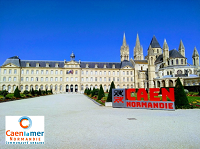Orateur
Description
The only way to study the properties of asymmetric nuclear matter at high densities in the laboratory conditions is to investigate the relativistic heavy ion collisions. A complementary source of information are the astrophysical observations and gravitational waves. The degree of compression and pressures achieved during the heavy ion collision depend on the susceptibility of the nuclear matter to compression, and hence on its equation of state. In particular, the measured angular and energy distributions of the neutrons and protons, light isobars and of the π−and π+emitted form the interaction zone depend on the symmetry energy and its gradients at the attained densities. Precision measurements of the azimuthal distributions of neutrons and protons and light isobars with respect to the reaction plane require specific detectors. The setup for the ASY-EOS II experiment within the R3B infrastructure at GSI will allow for improved resolution flow measurements through the usage of the NeuLAND neutron/proton detector, the KRAB fast multiplicity trigger, reaction plane and centrality detector, of the CHIMERA multidetector at intermediate angles, of two TOFD time of flight walls for flow measurements at very forward angles and for light charged particles hitting NeuLAND and of the KRATTA array for complementary measurement of light charged particles opposite to NeuLAND. The presentation will focus on the KRAB detector constructed to fulfill the special requirements for the multiplicity trigger around the target in the ASY-EOS II setup. Its characteristics and performance measured during the tests at CCB on the proton beam and at GSI on the relativistic Au beams will be presented.

